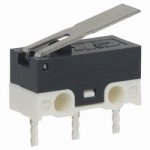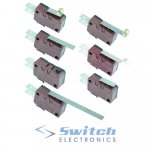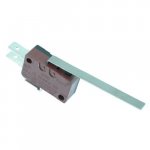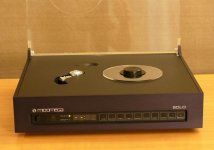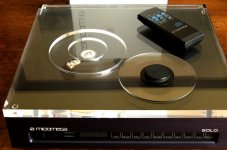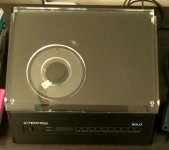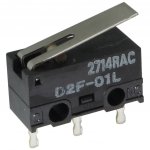In general (compared to other components such as semiconductors), transformers really rarely fail.How often do these toroidal power transformers fail?
In my 50+ year electronics career I have encountered one failure:
A Carver power amplifier where one minute it was fine, then the mains fuse blew, and after that the toroidal power transformer was permanently shorted. I was never able to determine which winding had the short. There were no signs of overheating or physical damage. 10 years later this unit is still sitting on a back shelf somewhere in my audio archive. Also there were no faults in the amplifier circuitry. This amplifier could be restored if a replacement power transformer could be found.
-EB
But the following rule applies to toroidals: The smaller, the more often. Thorens TCD-2000, various Moth power amps - go to
Stan Curtis, Engineer, Moth amplifier downloads
and some toroidals from Cambridge Audio components after 1994 are any examples, that just come in my mind. I have approximately 30 failed toroidals from 35 years repair service (mostly such with very small outline) but only one laminated core transformer with shorting primary winding.
For understanding this observation check out this
Rotel Transformer Manufacturing Process - YouTube
Toroidal Transformer Installation Setup and Connection Principal - YouTube
Toroidal Transformer Installation Setup and Connection Principal - YouTube
But also too cheap manufacturing process is an important reason. Most failed toroidals are made in India.
Last edited:
Transformers can fail if vibrations of the windings from inrush current over the years will harm the wire enamel => short circuit. Thats why I'm a big fan of resin potting.
Even more frequent failure is due to poor mounting using
small metal disks and thin rubber layers, creating undue
mechanical force on limited areas of the outside winding.
It is advisable to use additional soft material to protect the
copper insulation on many intruments.
I suspect the failed toroidal power transformer in my Carver power amp might have been physically damaged prior to developing its internal short-circuit. There were no signs of overheating. Also there were no faults in the amplifier circuitry. One minute it was fine, and the next minute it wasn’t.Even more frequent failure is due to poor mounting using
small metal disks and thin rubber layers, creating undue
mechanical force on limited areas of the outside winding.
It is advisable to use additional soft material to protect the
copper insulation on many intruments.
-EB
information for the tactile switches are here:
https://www.diyaudio.com/forums/par...romega-model-solo-duo-series.html#post6729343
rs components listed a datasheet, go to
https://docs.rs-online.com/1c0d/0900766b80be72c7.pdf
but you cannot order these parts there.
https://www.diyaudio.com/forums/par...romega-model-solo-duo-series.html#post6729343
rs components listed a datasheet, go to
https://docs.rs-online.com/1c0d/0900766b80be72c7.pdf
but you cannot order these parts there.
according page 6-1 of CDM-2 service manual (also for CDM-4) there are a lot of different associated servo boards which can be recognized by the 4-digit number on the attached sticker mostly glued on the surface of TDA5708.
The service manual version under
https://www.hifiengine.com/manual_library/philips/cdm-2.shtml
also to find under
https://elektrotanya.com/philips_cdm-2_cd-mechanism_sm.pdf/download.html
includes the following PCB versions:
1) static version of CDM-2, 5725 and 5768
2) dynamic version of CDM2, 5826 and 5827
But there are many other PCB-Versions like 5886, 5888, 6127 and 6105 are examples.
Because the version 5886 is in use on Philips CD660 and CD670 and the CD660 service manual refers to the extra manual for the CDM-2 I guess, there is at least one upgrade to the CDM-2 service manual.
Who can upload this (for me most important is the version "6105" from this cd-player - go to the last image of post #54) ?
Additional I want to know, in which Philips CD player model the "6105" servo board is in use.
Thank you very much.
The service manual version under
https://www.hifiengine.com/manual_library/philips/cdm-2.shtml
also to find under
https://elektrotanya.com/philips_cdm-2_cd-mechanism_sm.pdf/download.html
includes the following PCB versions:
1) static version of CDM-2, 5725 and 5768
2) dynamic version of CDM2, 5826 and 5827
But there are many other PCB-Versions like 5886, 5888, 6127 and 6105 are examples.
Because the version 5886 is in use on Philips CD660 and CD670 and the CD660 service manual refers to the extra manual for the CDM-2 I guess, there is at least one upgrade to the CDM-2 service manual.
Who can upload this (for me most important is the version "6105" from this cd-player - go to the last image of post #54) ?
Additional I want to know, in which Philips CD player model the "6105" servo board is in use.
Thank you very much.
in post #36 there are described the differences between the servo PCB's "5886" and "6105" so as the pdf service manuals of various brands, where to find the associated circuits. Nevertheless I want to have the CDM-2 manual supplement from Philips concerning this boards together with the CDM-4/25.according page 6-1 of CDM-2 service manual (also for CDM-4) there are a lot of different associated servo boards which can be recognized by the 4-digit number on the attached sticker mostly glued on the surface of TDA5708.
The service manual version under
https://www.hifiengine.com/manual_library/philips/cdm-2.shtml
also to find under
https://elektrotanya.com/philips_cdm-2_cd-mechanism_sm.pdf/download.html
includes the following PCB versions:
1) static version of CDM-2, 5725 and 5768
2) dynamic version of CDM2, 5826 and 5827
But there are many other PCB-Versions like 5886, 5888, 6127 and 6105 are examples.
Because the version 5886 is in use on Philips CD660 and CD670 and the CD660 service manual refers to the extra manual for the CDM-2 I guess, there is at least one upgrade to the CDM-2 service manual.
Who can upload this (for me most important is the version "6105" from this cd-player - go to the last image of post #54) ?
Additional I want to know, in which Philips CD player model the "6105" servo board is in use.
Thank you very much.
Concerning replace of a laser unit from the used CDM4/25 check out post #7 under
https://www.diyaudio.com/community/threads/cdm-4-laser-compatibility.70702/
https://www.diyaudio.com/community/threads/cdm-4-laser-compatibility.70702/
I am looking for exact model naming of micro switch used for switching "ready" while closed plastic glass dust cover.
It looks very similar to those of attached images and this one under
https://sps.honeywell.com/de/de/pro...basic-switches/large-basic-switches/be-series
It looks very similar to those of attached images and this one under
https://sps.honeywell.com/de/de/pro...basic-switches/large-basic-switches/be-series
Attachments
both.are you looking to buy one or do you want a precise reference?
The right keyword is "Snap Action Switch with Bump Lever"
Actually I need only the bump lever - the existing one from my device (and also from the model "DUO" from a friend) was lost. Unfortunately I haven't the data of length and wide of the genuine bump lever.
the mentioned URL is in German. here the English version:I am looking for exact model naming of micro switch used for switching "ready" while closed plastic glass dust cover.
It looks very similar to those of attached images and this one under
https://sps.honeywell.com/de/de/pro...basic-switches/large-basic-switches/be-series
https://sps.honeywell.com/us/en/pro...basic-switches/large-basic-switches/be-series
Line-up
https://sps.honeywell.com/us/en/pro...-switches/basic-switches/large-basic-switches
it must be a standard length, micromega took a lot of standard parts reserved for the industry.both.
The right keyword is "Snap Action Switch with Bump Lever"
Actually I need only the bump lever - the existing one from my device (and also from the model "DUO" from a friend) was lost. Unfortunately I haven't the data of length and wide of the genuine bump lever.
From memory there are not many lengths available on the market, if you buy a model with a short lever arm, you can weld a longer piece on it and adjust it until you get the right result, otherwise, mounting holes in the switch itself are standard.
thanks; nearly correct.
Today I completely disassembled the right site cover and removed this micro switch to read the type designation.
Follow type designation I read:
OMRON D2F O1L (not hard to find)
https://www.mouser.de/ProductDetail/Omron-Electronics/D2F-01L?qs=0w99tykdtPJyAZbwr7e4aQ==
https://www.distrelec.de/de/mikrosc...mron-electronic-components-d2f-01l/p/13587359
Today I completely disassembled the right site cover and removed this micro switch to read the type designation.
Follow type designation I read:
OMRON D2F O1L (not hard to find)
https://www.mouser.de/ProductDetail/Omron-Electronics/D2F-01L?qs=0w99tykdtPJyAZbwr7e4aQ==
https://www.distrelec.de/de/mikrosc...mron-electronic-components-d2f-01l/p/13587359
Attachments
This toroidal transformers often fail (not only on this Micromaga SOLO go to last image of post #55 and #57) because it's very small size.How often do these toroidal power transformers fail?
In my 50+ year electronics career I have encountered one failure:
A Carver power amplifier where one minute it was fine, then the mains fuse blew, and after that the toroidal power transformer was permanently shorted. I was never able to determine which winding had the short. There were no signs of overheating or physical damage. 10 years later this unit is still sitting on a back shelf somewhere in my audio archive. Also there were no faults in the amplifier circuitry. This amplifier could be restored if a replacement power transformer could be found.
-EB
But concerning of this model I note in the image in post #1 under
https://www.diyaudio.com/community/threads/micromedia-solo-problem.406442/
that early devices of this series use a usual blue block transformer version - maybe a good solution for replace the small toroidal transformer with bad reliability in later series.
- Home
- Source & Line
- Digital Source
- Micromega Solo CD Player - help!!
